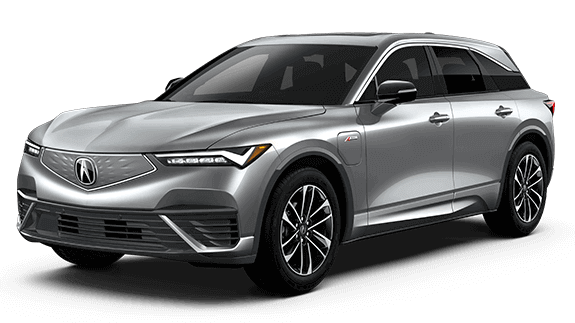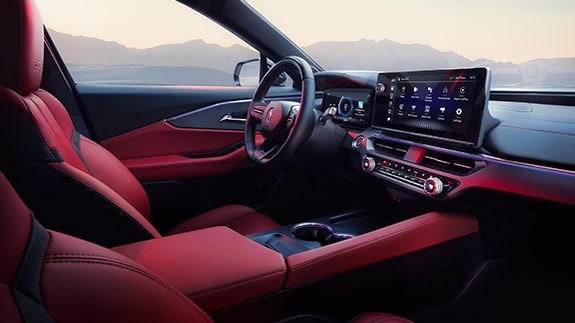This series has so far discussed the basics of a factory-installed car audio system as well as details about the head unit, amplifier and speakers. To wrap things up, we'll discuss what to look for in an audio system when shopping for a new car and we'll also tell you how to upgrade a factory system with aftermarket components if you're interested in improving its performance.
Features To Look for and How To Upgrade: Understanding Car Audio Systems, Part 5
Get the Features You Want
OEM Versus Aftermarket
In years past, even the best audio offerings from automakers provided a lackluster experience for discerning listeners. It was pretty much a given that you'd replace the factory stereo system with superior aftermarket components if you wanted the latest features and best sound possible, as well as the most value for the dollar.
That's not the case today, since a good premium OEM (original equipment manufacturer) system can rival an equivalent aftermarket setup in almost every respect and sometimes even surpass it. The head unit in many vehicles is also integrated into the dash in such a way that it can be expensive to replace (and the end result might look unattractive besides). And systems such as navigation and Bluetooth and stock steering-wheel controls are also often tied into the factory head unit.
See Edmunds pricing data
Has Your Car's Value Changed?
Used car values are constantly changing. Edmunds lets you track your vehicle's value over time so you can decide when to sell or trade in.

Amplification and speakers in stock systems have also improved, although these two areas still tend to be the weak spots in an OEM system. Fortunately, they're also the easiest to upgrade.
Features To Look for
With stock systems getting more sophisticated and automakers adding new technologies such as music-player integration and Bluetooth audio, it's easy for the average consumer to become confused about his car's audio hardware. Knowing what's important in an audio system is crucial if you want to be pleased long after your initial purchase. Here's what to look for in a good system that will be satisfying to use:
- Ample power: As we discussed in the amplifier installment in this series, ample clean power is one of the most important factors in high-quality sound reproduction. Even the best speakers will sound terrible when driven by an underpowered amplifier that creates distortion.
- Auxiliary input: An aux-in jack that lets you plug in a portable music device such as an iPod using an accessory cable has become a common feature in most audio systems. It allows almost any music player to be integrated into a car's audio system, although you have to use the controls on the device to access content, which is distracting while driving.
- Bluetooth audio: In the same way that Bluetooth hands-free technology transfers a call to an audio system so you can hear a caller's voice over the speakers, Bluetooth audio wirelessly streams music from a compatible device to the audio system. But control is usually limited to volume up/down and track-skip forward/back. For more on Bluetooth audio, see this in-depth article.
- Controls on the steering wheel: These let you operate basic functions such as volume up/down, radio preset or music-track skip forward/back and switch audio sources without taking your hands off the steering wheel. A few will even let you control a connected music player.
- Easy-to-read display: An audio system's display is also crucial to simple and safe operation, especially while driving. Make sure the display is easy to read at a glance and remember to check visibility with daytime glare from the sun as well as at night.
- Intuitive controls: You want to minimize distractions while driving, so an audio system with intuitive controls will be easier — and safer — to use.
- Separate subwoofer: Good low bass is a necessity for a great audio system. Smaller speakers can't reproduce realistic low-frequency sounds, so for this a good system really needs a separate subwoofer.
- USB port: A USB port offers a better way to integrate a portable music player into a system. You can typically use a head unit's controls to control the device, while the device's battery will also charge while connected to a USB port. You can also connect a USB flash drive and play music files stored on it.
- Voice command: Being able to operate your system with voice command is the most convenient and safest way to control an audio system. The best voice-activated systems will also let you change radio stations, CD tracks or even call up specific songs, artists, albums and playlists on a connected music player.
Upgrade Options
If you want to improve sound quality, today's OEM audio systems are so integrated into a vehicle's electronics that it's better to upgrade the system than replace it. The tricky part lies in knowing which components to replace or add.
If your car has a decent OEM head unit with desirable features and integration with other systems in the vehicle, you probably don't want to replace it. But if the vehicle has a basic head unit without the features and performance you want, you can start fresh with a good aftermarket unit. Make sure to find an aftermarket shop that's familiar with your car and its electronics.
If you're happy with your head unit but not the sound of your system, the next step is to increase amplifier power and possibly replace your speakers. Start with adding more power. As we've previously discussed in this series, poor sound is usually caused by a lack of proper power rather than by inferior speakers.
Just make sure that the car's speakers can handle the extra power from an aftermarket amplifier. A reputable aftermarket car audio shop will help you match an add-on amplifier to your factory speakers. Just don't expect to add a 1,000-watt aftermarket amplifier to factory speakers designed for 300 watts. Also keep in mind that some premium OEM systems use proprietary wiring that makes it difficult to swap out stock amplifiers and speakers for aftermarket components.
With the head unit and amplification handled, you can turn your attention to speaker upgrades. Aftermarket "drop-in" speakers designed to fit the factory speaker locations in many cars provide an easy and inexpensive way to improve the sound of a stock system. Many stock systems can benefit from adding a subwoofer for better bass response. Large subwoofers won't fit in the locations allocated for stock speakers, so you'll have to add an enclosure for the sub to get good bass. A great solution is an aftermarket subwoofer and enclosure designed to fit a specific vehicle without taking up much space.
Arm Yourself With Car Audio Info
If you choose to upgrade your car's stock system, make sure to read the article "How to Shop for an Aftermarket Car Audio System" before heading to the electronics store. Armed with the knowledge you've gained from reading this series, "Understanding Car Audio Systems," you're ready to make sound decisions that will lead to hours of happy listening while behind the wheel.
You can reference other installments in this series here:

